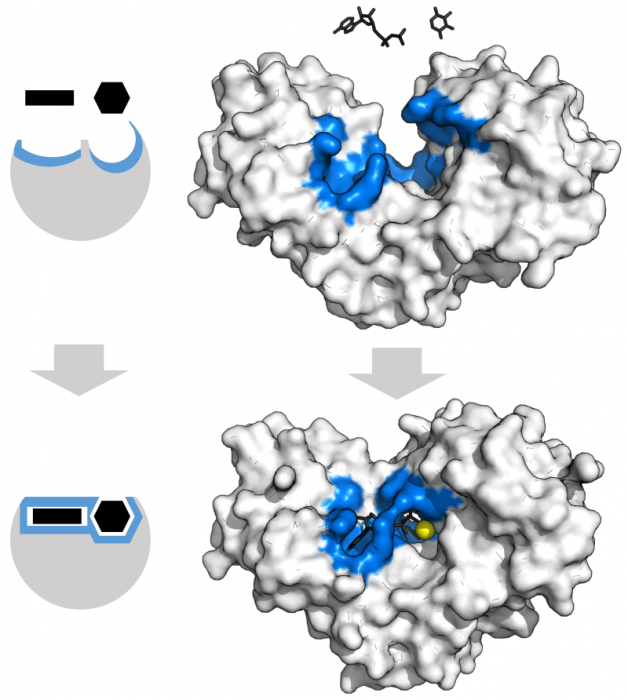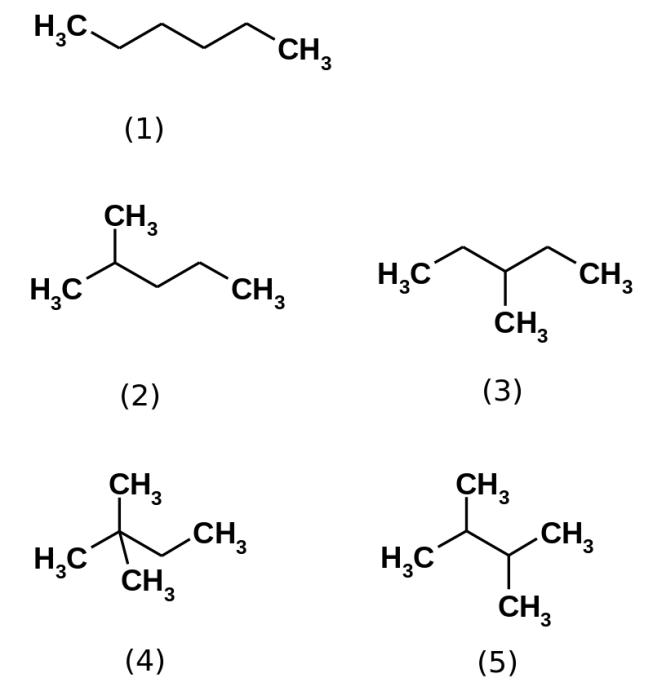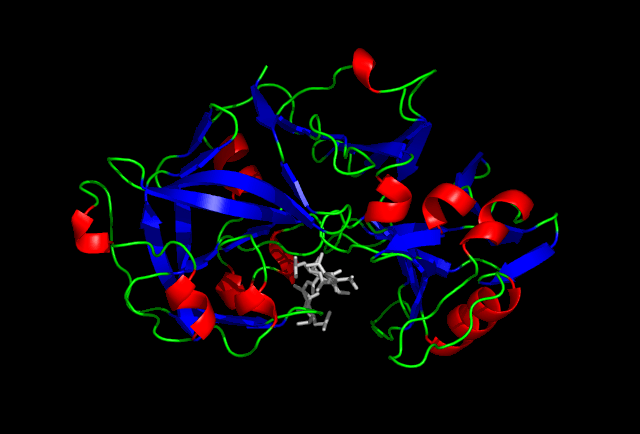
Enzymes in the human body serve a variety of different functions. For example, different categories of enzymes include digestive enzymes, metabolic enzymes, liver enzymes, nucleases and receptor enzymes. Examining these five categories of enzymes in detail will make the many important roles of enzymes in the human body more clear.
Defining Enzymes
Before we discuss the various types of enzymes in the body, let’s take a moment to define enzymes. Enzymes are biological molecules which enhance the speed at which chemical reactions are carried out within cells. Enzymes are usually proteins, although enzymes can be other types of molecules as well. Enzymes aid in processes such as metabolism and digestion, and they are critical for life on planet earth. Enzymes can carry out many different roles like breaking large molecules into smaller portions so the body can more easily absorb them or producing new molecules by binding other molecules together. However, these reactions will only be carried out by certain enzymes as they are extremely selective catalysts, only the right reaction will be enhanced by an enzyme.

Example of the induced fit method of enzyme-substrate bonding. Photo: By Thomas Shafee – Own work, CC BY 4.0, https://commons.wikimedia.org/w/index.php?curid=45801557
The enzymes that molecules are manipulated by are referred to as substrates, and they are joined to specific regions of the enzyme dubbed active sites. There are two different models of enzyme action: the induced-fit model and the lock-and-key model. In the former model, both substrate and active sites alter their fundamental shape to join together, while in the latter model the active site of an enzyme cannot change and therefore it will only accept specific substrates. In either case, enzymes can speed up the rate a reaction occurs at over a millionfold once the substrate has been bound to the enzyme’s active site. The chemical reactions that result from the combination of substrates and enzymes create new molecules or products, which then branch off of the enzyme and can go on to kickstart other reactions.
The total atomic weight of an enzyme ranges from approximately 10,000 to over 1 million units. While most enzymes are proteins, this isn’t true of every enzyme. Some enzymes actually have small RNA molecules that act as catalysts rather than the catalytic proteins found within other enzymes. Some enzymes are also made out of multi-protein complexes strung together from many individual protein subunits. Although many enzymes are capable of catalyzing reactions by themselves, enzyme cofactors or additional nonprotein components are sometimes necessary for the capitalization of the reaction. Inorganic ions like Mn2+, Zn2+, Fe2+ or Mg2+ may serve as cofactors or metallorganic compounds called coenzymes can serve as the cofactor.
Different Types Of Enzymes

Examples of isomerase isomers of hexane. Photo: By Steffen 962 – Own work, Public Domain, https://commons.wikimedia.org/w/index.php?curid=11726102
Enzymes are macromolecules that catalyze biochemical reactions, and inhibitors are molecules that decrease enzyme activity, while activators enhance enzyme activity. Enzymology is the study of enzymes. Enzymes can broadly be divided into five different classes:
- Hydrolases cut or cleave the substrate part through the process of hydrolysis or through the uptake of molecules of water.
- Oxidoreductases are enzymes involved in the process of electron transfer.
- Isomerases are enzymes that form isomers by transferring groups in a molecule.
- Ligases create new chemical bonds by breaking down pyrophosphate bonds in a nucleotide.
- Transferases are those which transfer chemical groups from one molecule to another molecule.
There are over 5000 biochemical reactions which are driven by enzymes. These enzymes are used in many different products, both household products and industrial-strength products, to create new molecules. Enzymes are often used to make food products such as cheese, wine, and beer. Meanwhile, some diseases are driven by a lack of certain enzymes, such as albinism and phenylketonuria. Some of the more common enzymes are listed below:
DNA polymerase is an enzyme which drives chemical reactions that occur as DNA is copied and prepared for cellular division. DNA polymerase ensures that the correct number of bases are being used to construct the DNA.
Many different enzymes are found in cleaning chemicals such as stain removers and laundry detergent. These enzymes help get oils and stains out of fabrics by breaking up the enzymes within these chemicals, enabling the stained to come out of the fabric.
Papain is a type of enzyme found within meat tenderizers. The enzyme is used to degrade the bonds between protein molecules, and it is this reaction that makes the meat more tender.
Amylase is one example of an enzyme within the human body. Amylase is found in our saliva, and it is part of the initial digestion process of food, beginning the breakdown of carbohydrates.
Types Of Enzymes In The Body
There are at least five different classes of enzymes that can be found within the body: digestive enzymes, metabolic enzymes, liver enzymes, nucleases, and receptor enzymes. Let’s take a look at these different categories of enzymes and specific examples of each of them.
Digestive enzymes are those involved in the breakdown of food within animals and humans. Examples of digestive enzymes include amylase, pepsin, lipase, nucleases, and lysozymes.
Amylase is a type of enzyme that assists in the breakdown/digestion of carbohydrates. Most amylase will breakdown carbohydrates into glucose, and the actual process begins inside the mouth where salivary amylase, the enzyme found within our saliva, begins to break down the food as we chew it. Salivary amylase begins to degrade starch into glucose, while the remaining food will be created and absorbed as in journeys through the stomach and the intestines. Lysosomes are also found within the saliva, and their job is to kill microbes within the mouth.

Pepsin Photo: By No machine-readable author provided. DrKjaergaard assumed (based on copyright claims). – No machine-readable source provided. Own work assumed (based on copyright claims)., Public Domain, https://commons.wikimedia.org/w/index.php?curid=1255010
Pepsin or peptidases are enzymes which breakdown different proteins into amino acids, which can then be used to form molecules necessary for cellular operation. Much of the breakdown of complex molecules happens in the small intestine, though some of it does occur in the stomach.
Lipase is a type of enzyme responsible for breaking down oils and fats into alcohols and fatty acids. Lipase happens to be one of the enzymes found within the pancreas or the pancreatic enzymes.
Receptor enzymes are those involved in the reception of different biomolecules. Receptor enzymes help activate or inactivate biomolecules like glucose and glycogen. Receptor enzymes can either assist in dephosphorylation or phosphorylation, with the dephosphorylation enzymes being called phosphatases and the phosphorylation enzymes referred to as kinases. Only a few enzymes are also receptors.
Metabolic enzymes, as the name implies, are involved in the metabolism of cells, and in the detoxification of substances found within the body. There are many different metabolic enzymes that specialize in breaking down different substances. For instance, oxidases are enzymes that convert different substances into ketones while hydrolases breakdown materials when water is involved.
Reductases are enzymes that introduce hydrogen into substrates during the course of the reaction, while lyases are enzymes linked to the degradation of molecules without oxidation or hydrolysis. Ligases are enzymes that bond two or more molecules together. Isomerase can convert molecules into different forms, able to take one molecule and transform it into a similar though distinct form, and back again. Glucuronic acid is introduced to non-water soluble substances by glucuronidase, which makes the molecules water-soluble and therefore able to be excreted in the body’s urine. Transanunes are enzymes that either remove or add amino acids to compounds.
Glycogen synthase is a type of enzyme involved in the production of glycogen, taking the glycogen from glucose and enabling it to be stored within the liver. Lactate dehydrogenase is an enzyme which makes pyruvic acid out of lactate. Aminoacyl tRNA (translation RNA) synthetase is a type of enzyme responsible for the binding of different amino-acids to tRNA, which will help the cell’s genetic information be reproduced.
The liver is an organ responsible for the detoxification of substances, enabling the body to rid itself of waste products through urine. The liver has many different enzymes within it in order to break down toxic compounds, with some of the most important enzymes being aspartate aminotransferase (AST) and Alanine transaminase (ALT). Alanine transaminase (ALT) may also be referred to as Serum glutamate pyruvate transaminase (SGPT), while aspartate aminotransferase (AST) may be called Serum glutamic oxaloacetic transaminase (SGOT). These two enzymes both act on amino acids to capitalize on. Besides AST and ALT there is a family of enzymes referred to as cytochrome p450, responsible for handling the breakdown of different drugs.
There are also many enzymes in the nervous system that aid in the metabolism of neurotransmitters. For instance, acetylcholinesterase is responsible for the breakdown of acetylcholine while monoamine oxidase degrades very substances like noradrenaline, adrenaline, and dopamine.
Beyond the enzymes tied to various systems of the body, there are also special enzymes within the body, enzymes which serve roles not linked to the above systems. Urokinase is an enzyme that breaks up clots, while endonucleases are enzymes that split DNA strands apart. There are subtypes of endonucleases referred to as restriction endonucleases that split DNA strands at one specific site. Hyaluronidase is an enzyme carried by sperm which is released when in the female reproductive tract, and it is intended to help the sperm penetrate the wall of the ova and merge with the egg. An enzyme which specializes in the cutting and sealing of DNA is DNA topoisomerase-II, while the DNA dependent RNA polymerase is an enzyme that assists in the creation of mRNA. Finally, cyclooxygenase enzymes come in two forms CO X1 and COX-2 and they are responsible for controlling the creation of prostaglandin, a chemical involved in the production of gastric mucus and in inflammation.









